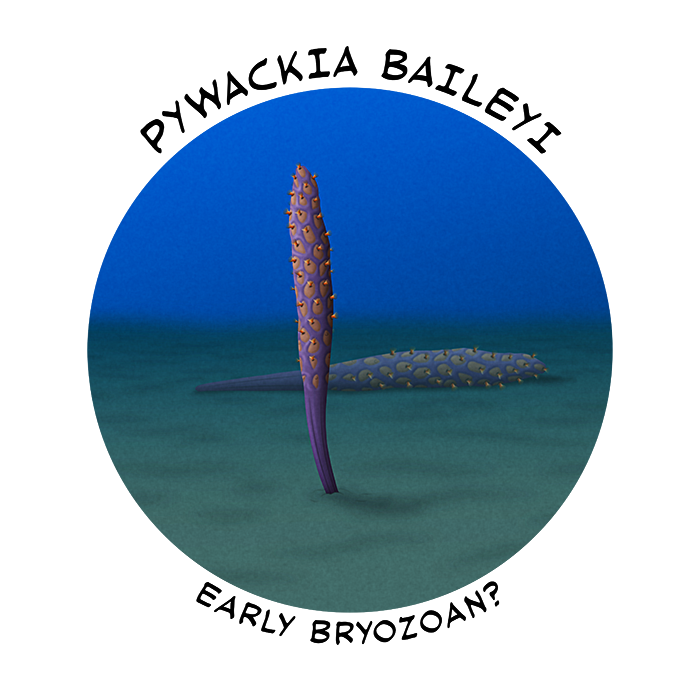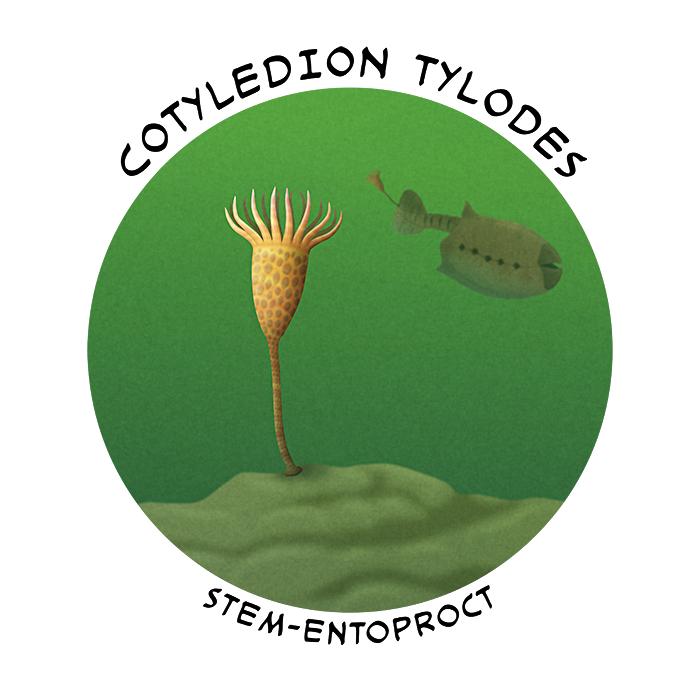Ectoprocts, common known as bryozoans or “moss animals”, are aquatic lophotrochozoans that usually live in colonies made up of many tiny cloned zooids. The exoskeletons they build for their colonies have a range of forms, including gelatinous blobs, chitinous branches, and calcified sheets and coral-like fronds.
They’re part of a sub-group of lophotrochozoans called lophophorates, closely related to brachiopods and horseshoe worms, and are characterized by having a ring or U-shaped “crown” of filter-feeding tentacles around their mouths.
Mineralized bryozoans have an extensive fossil record going back to the early Ordovician, about 481 million years ago, but they’re surprisingly absent from the Cambrian – with one possible exception.

Pywackia baileyi is known from fossil deposits in southwest Mexico dating to close to the very end of the Cambrian, about 489 million years ago. It formed stem-like roughly cylindrical colonies less than 1cm long (0.4″), with a calcified exoskeleton and a somewhat irregular growth pattern, and it’s unclear whether it grew upright or laying on the seafloor.
Its classification is controversial and has been questioned, instead comparing it to cnidarian sea pens, so it’s not definitive proof of bryozoans being present during the Cambrian. But if it was a bryozoan it brings their fossil record back by a few million years, and it may represent one of the first members of the group to develop a mineralized skeleton. Earlier bryozoans were probably entirely soft-bodied and much less likely to fossilize, and may have been rare enough components of Cambrian ecosystems that we just haven’t found any yet even in sites of exceptional preservation.
Entoprocts are tiny filter-feeding animals similar to bryozoans, but while they’re also mostly colonial they don’t construct elaborate exoskeletons, instead being connected to each other by stolons. Individual zooids resemble goblets, with a “cup on a stalk” shape and a lophophore crown of tentacles, and their main distinguishing feature from bryozoans is the position of their anus – entoprocts have theirs inside their tentacle crowns near their mouths, while bryozoans’ are outside it.
They’re traditionally grouped together with the bryozoans, but some studies consider them to be instead be closer related to horseshoe worms, or even outside the lophophorates over with the molluscs.
Their fossil record is very poor due to their minuscule soft bodies, with the oldest undisputed specimens coming from the late Jurassic (~157 million years ago). But a few similar-looking Cambrian animals have been tentatively associated with the group as members of early stem lineages, suggesting that entoprocts’ ancestry is just as ancient as that of their other lophotrochozoan relatives.

Cotyledion tylodes from the Chinese Chengjiang fossil deposits (~518 million years ago) was originally interpreted as an early echinoderm, until new fossils showed its anatomy more clearly and revealed an entoproct-like crown of tentacles and a U-shaped gut.
With a cup-shaped body on a long stalk, up to 5.6cm tall (2.2″), it was significantly larger than its modern relatives, and uniquely for an entoproct it was also covered with small oval armor plates.
It would have mostly lived attached onto hard surfaces on the seafloor like rocks and shell fragments, although a few specimens have been found on the tail-tips of the deuterostome animal Vetulicola – indicating it sometimes also settled onto the carapaces of living hosts, probably opportunistically feeding on their poop.
